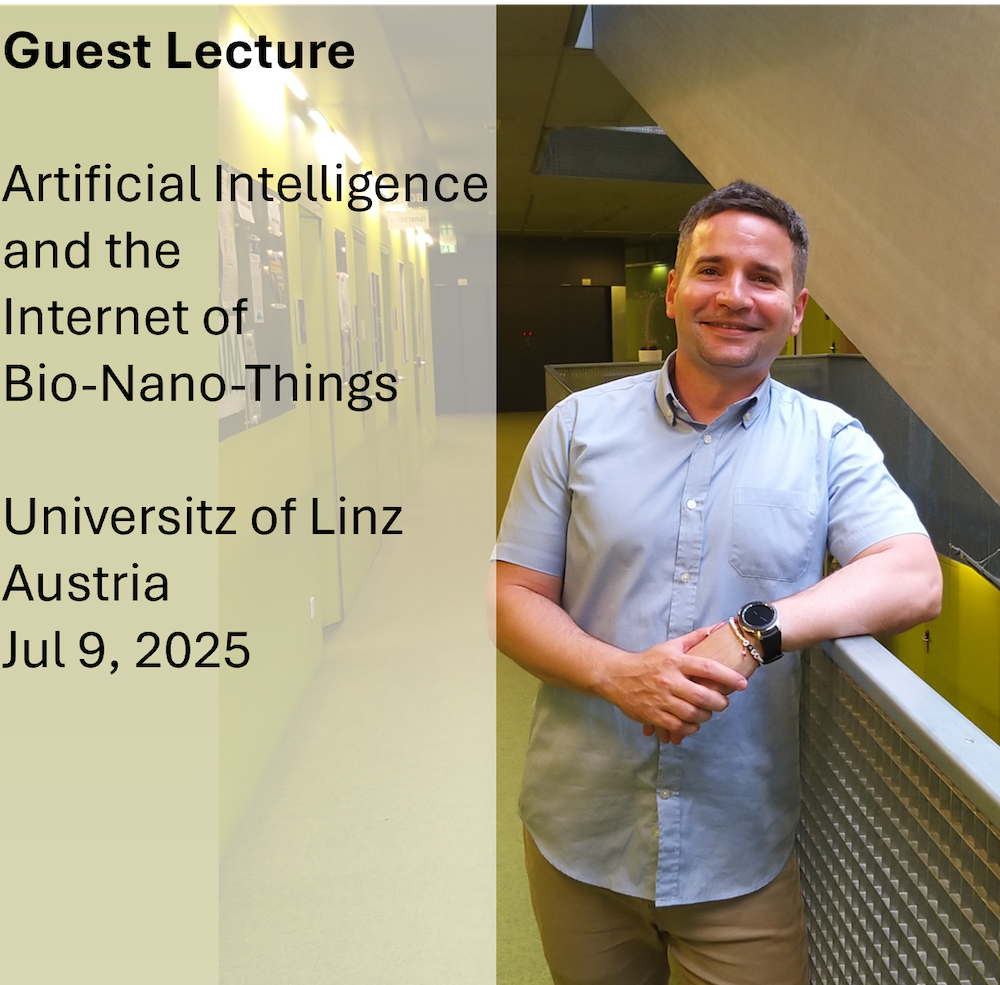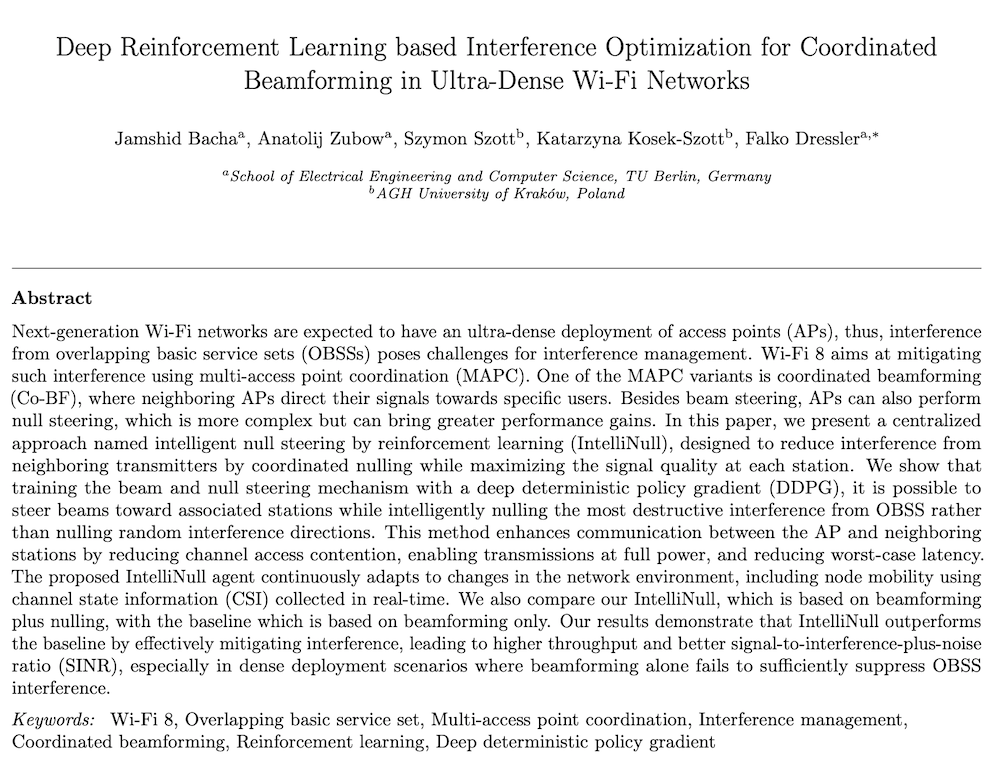Literature Database Entry
raddatz2022evaluation
Niels Raddatz, "Evaluation of a reinforcement learning approach for interference management in WiFi," Bachelor Thesis, School of Electrical Engineering and Computer Science (EECS), TU Berlin (TUB), July 2022. (Advisor: Anatolij Zubow; Referees: Falko Dressler and Thomas Sikora)
Abstract
One of the key problems of modern WiFi networks is their increasing density, which lead to higher interferences by devices in overlapping basic service sets (OBSSs). This demands better methods to mitigate these effects. A new idea to do this was proposed in for the upcoming IEEE 802.11be standard. It is called coordinated beamforming, which extends the concept of beamforming within a basic service set (BSS) to devices in OBSSs. The normal beamforming, that exists today, is used to enable parallel data streams, but it could also be used to suppress the radiation pattern of a multi-antenna system in particular directions. With coordinated beamforming two or more access points (APs) in OBSSs can use this approach to reduce their interference on stations (STAs) in the other BSS. But to use this method a nulling configuration is required. This configuration contains all STAs that should be nulled during the upcoming transmission and has to be renewed depending on the participants in every consecutive transmission. To solve the problem of finding an optimal configuration, I use a reinforcement learning (RL) agent that selects the STAs, which should be nulled within every cooperating OBSSs. I have found that it is possible with this approach to generate solutions for that problem, which lead to higher data rates per AP than the common carrier sense multiple access with collision avoidance (CSMA/CA) approach. But these advantages become thinner as larger the number of cooperating APs gets, because the number of devices that can be nulled is limited by the number of antennas. A conclusion that can be made from that findings, is to use that method only for small scale networks if the APs that are used have only four antennas, which is very common today. On the other hand, if more antennas are available that RL method can also be used for larger network sizes.
Quick access
Contact
Niels Raddatz
BibTeX reference
@phdthesis{raddatz2022evaluation,
author = {Raddatz, Niels},
title = {{Evaluation of a reinforcement learning approach for interference management in WiFi}},
advisor = {Zubow, Anatolij},
institution = {School of Electrical Engineering and Computer Science (EECS)},
location = {Berlin, Germany},
month = {7},
referee = {Dressler, Falko and Sikora, Thomas},
school = {TU Berlin (TUB)},
type = {Bachelor Thesis},
year = {2022},
}
Copyright notice
Links to final or draft versions of papers are presented here to ensure timely dissemination of scholarly and technical work. Copyright and all rights therein are retained by authors or by other copyright holders. All persons copying this information are expected to adhere to the terms and constraints invoked by each author's copyright. In most cases, these works may not be reposted or distributed for commercial purposes without the explicit permission of the copyright holder.
The following applies to all papers listed above that have IEEE copyrights: Personal use of this material is permitted. However, permission to reprint/republish this material for advertising or promotional purposes or for creating new collective works for resale or redistribution to servers or lists, or to reuse any copyrighted component of this work in other works must be obtained from the IEEE.
The following applies to all papers listed above that are in submission to IEEE conference/workshop proceedings or journals: This work has been submitted to the IEEE for possible publication. Copyright may be transferred without notice, after which this version may no longer be accessible.
The following applies to all papers listed above that have ACM copyrights: ACM COPYRIGHT NOTICE. Permission to make digital or hard copies of part or all of this work for personal or classroom use is granted without fee provided that copies are not made or distributed for profit or commercial advantage and that copies bear this notice and the full citation on the first page. Copyrights for components of this work owned by others than ACM must be honored. Abstracting with credit is permitted. To copy otherwise, to republish, to post on servers, or to redistribute to lists, requires prior specific permission and/or a fee. Request permissions from Publications Dept., ACM, Inc., fax +1 (212) 869-0481, or permissions@acm.org.
The following applies to all SpringerLink papers listed above that have Springer Science+Business Media copyrights: The original publication is available at www.springerlink.com.
This page was automatically generated using BibDB and bib2web.





